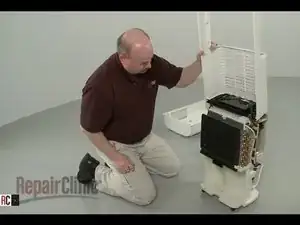
How Does a Dehumidifier Work?
These are some common tools used to work on this device. You might not need every tool for every procedure.
A dehumidifier is a household appliance that reduces or maintains the humidity level in the air of a room. Dehumidifiers are typically used for health or comfort reasons. They can also be used to eliminate musty odors and prevent mildew growth. In dwellings, most experts recommend a relative humidity between 30 and 50 percent. Dehumidifiers are sold for household, commercial, and industrial applications.
Dehumidifiers remove excess moisture from the air and store the excess water. The stored water can be removed in several ways. For some dehumidifiers, the user must physically remove the water storage container and dispose of the water. For other models, the device disposes of excess water in a vapor. Willis Carrier invented the first dehumidifier in 1902 to dehumidify a printing plant in Brooklyn. The invention of the dehumidifier motivated later innovations in air conditioning.
Dehumidifiers are categorized into condensate and desiccant models. Condensate dehumidifiers collect water using a refrigerator. This water is called condensate and can sometimes be reused for industrial purposes as greywater. Some models offer reverse osmosis filters which turn the greywater into potable water. Desiccant dehumidifiers— also called absorption dehumidifiers—use hydrophilic materials like silica gel to bond to the moisture. Some models use single-use hydrophilic substance cartridges that must be replaced.